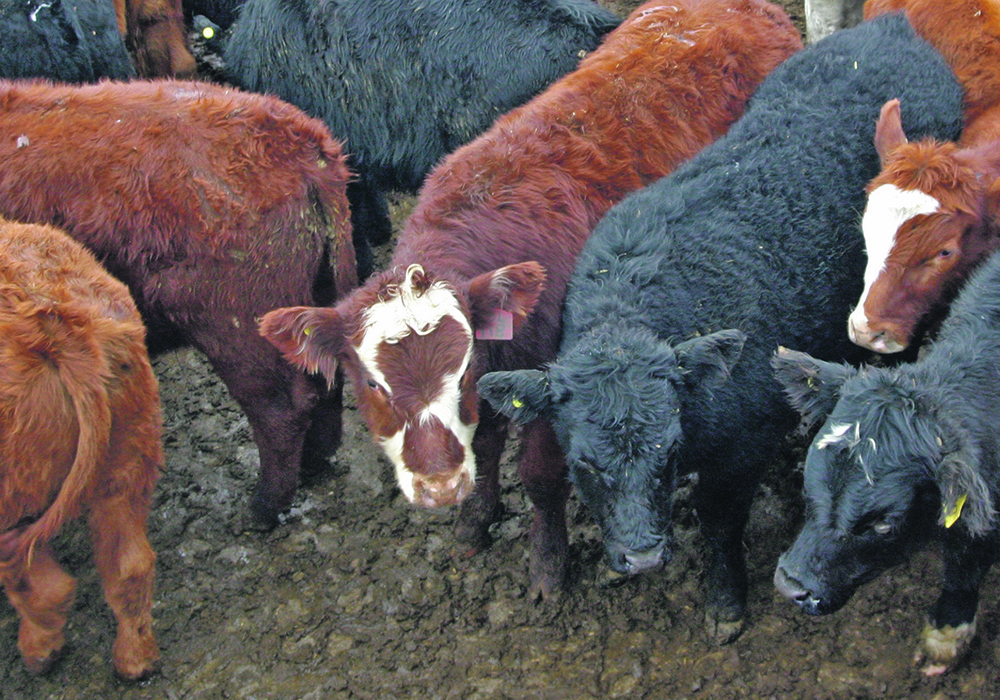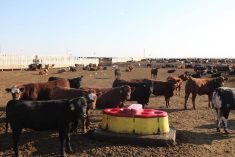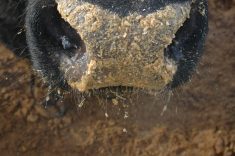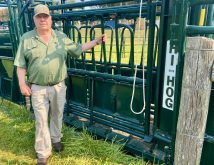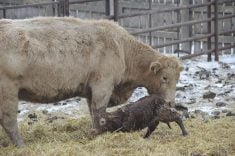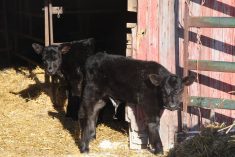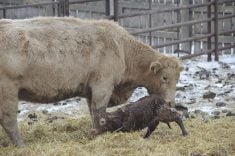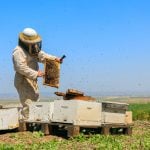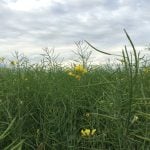Scientists try to find out if giving calves a probiotic before they enter the feedlot will prevent bovine respiratory disease
WINNIPEG — Over the last decade, scientists and doctors have established a connection between gut health and brain health.
They’re realizing that the community of bacteria within the intestine can influence mood, cognition, behaviour and other things that are normally associated with the brain.
“The gut-brain connection is complex and bi-directional,” says the Cleveland Clinic website.
“Signals pass both ways between your digestive system and central nervous system. Health or disease in one can affect the other.”
More recently, researchers have begun paying attention to the relationship between gut health and lung health — not just in humans but also in livestock.
Read Also
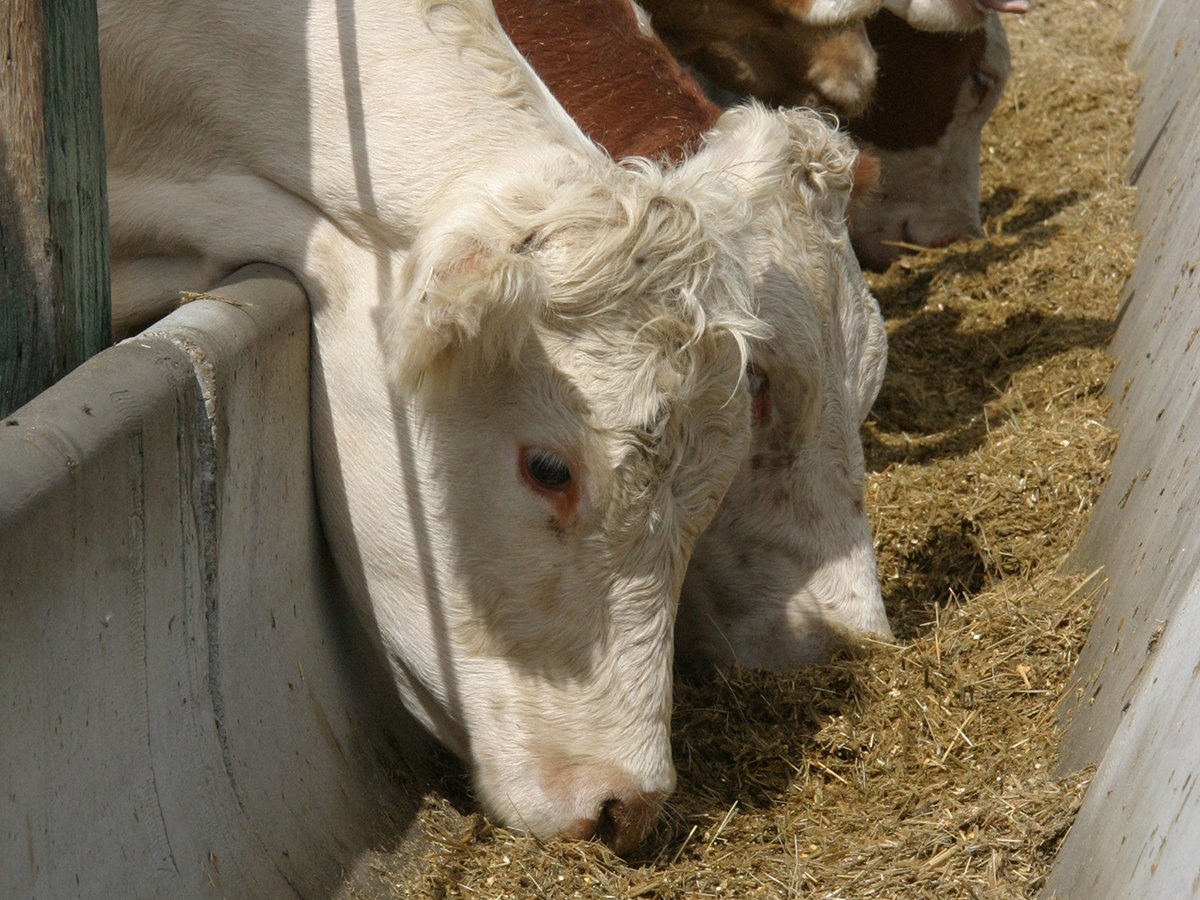
Alberta cattle loan guarantee program gets 50 per cent increase
Alberta government comes to aid of beef industry with 50 per cent increase to loan guarantee program to help producers.
A group of beef cattle researchers, including Agriculture Canada scientists in Alberta, want to know if this gut-lung connection can be used to prevent respiratory diseases in feedlot cattle.
“Bovine respiratory disease (BRD) is one of the leading causes of illness and death in newly received feeder cattle, and BRD prevention and treatment is the main reason that antibiotics are given to newly received feeder cattle,” says a Beef Cattle Research Council document about the research project.
“(The scientific) team is trying to develop alternatives to antibiotic mass-treatment of feeder cattle for BRD.”
Four researchers from Agriculture Canada’s research centre in Lethbridge — Trevor Alexander, Wade Abbott, Emma Stephens and Tim McAllister — are involved in the project, along with scientists from McMaster University in Hamilton and the University of Calgary.
Bovine respiratory disease typically occurs when “disease-causing microbes get the upper hand on the harmless or beneficial microbes that are normally found in the respiratory tract,” says a BCRC summary of the research.
The scientists want to know if a probiotic can improve the gut health of feeder cattle and foil the micro-organisms that cause BRD in the lungs.
They will be testing a probiotic feed additive from Diamond V, a company from Cedar Falls, Iowa, that manufactures a line of feed additives for beef cattle, dairy, swine, horses and poultry.
“Our natural immune support products help optimize animal health, performance and digestive function,” says the Diamond V website.
The Canadian researchers are taking a detailed look at one of the company’s products, a yeast extract, to understand how the microbes in the gut interact with micro-organisms in the lungs.
“The hypothesis around that would be the changes in the gut, particularly in the lower tract, alter the immunology of the host,” said McAllister.
“That in turn influences the immune status of the respiratory tract.”
Livestock experts such as McAllister often refer to the microbiome, which is the collection of microbes such as bacteria and fungi that live within cattle, swine and other mammals.
However, there is more than one microbiome.
“Most of the focus has been on the microbiome in the intestinal tract,” McAllister said.
“There are multiple microbiomes associated with a single host.”
How those microbiomes and bacteria interact is still a matter of speculation. It’s possible that a healthy community of gut bacteria could improve the immunity of the host — in this case, a young animal in a feedlot.
To determine if the hypothesis is correct, the scientists will conduct a trial on feedlot cattle at the Lethbridge research centre. They will compare animals that receive the probiotic to cattle that get antibiotics and a control group that doesn’t receive either treatment.
The researchers will track cattle performance, rates of sickness and other metrics to see how the probiotic performs.
“We can take samples and see if that organism (probiotic) is establishing in the GI tract or respiratory tract,” McAllister said.
“We (will) measure health parameters, like the (reduction) in bovine respiratory disease. Also, growth performance — animals that are ill … aren’t as efficient.”
The scientists hope to have results by 2025.
If the probiotic does perform as expected, it’s another option to prevent BRD in cattle.
“That’s a big part of it, looking at alternatives to anti-microbials,” McAllister said.
“It would be another tool in the toolbox … to deal with bovine respiratory disease and other respiratory diseases.”


